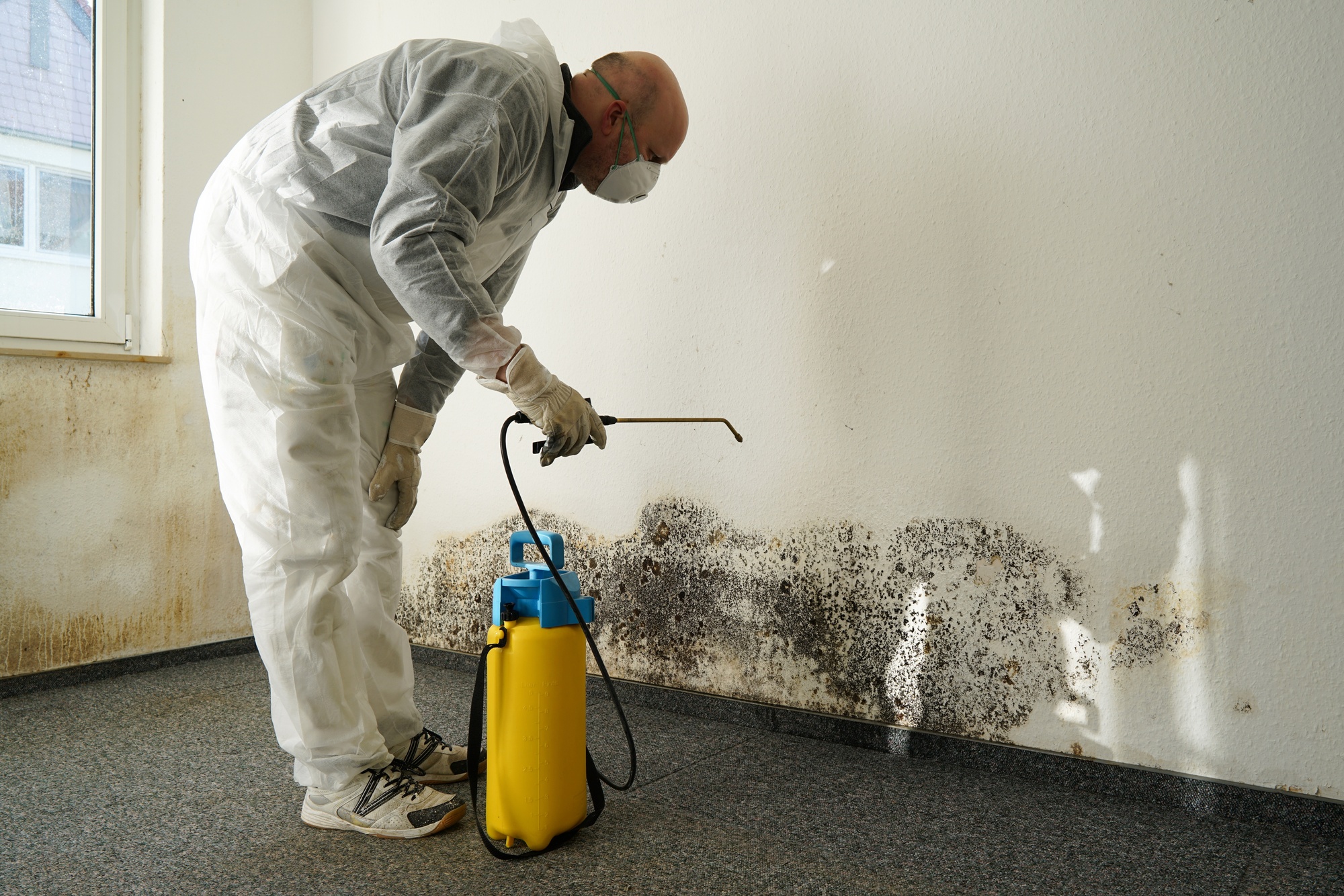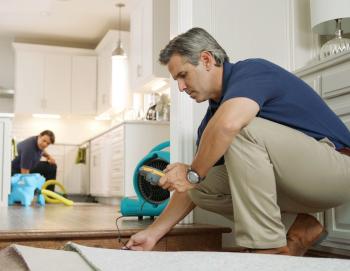Water Damage Restoration 101: Recognizing the Process and Price
Water damage can strike all of a sudden, leaving house owners in a state of confusion. Understanding the remediation process is crucial for efficient recovery. From examining the damage to selecting the appropriate service copyright, each step influences the total outcome and price. Factors such as the type of water damage and necessity additionally play a substantial role. What are the certain methods used in reconstruction, and exactly how can one plan for prospective costs?
Sorts Of Water Damage

Initial Assessment and Inspection

Water Extraction Techniques
Complying with the preliminary analysis, efficient water extraction techniques are utilized to alleviate damage and avoid further issues. These techniques involve using specialized tools such as industrial-grade vacuums and submersible pumps - Water Damage Restoration. The option of technique relies on the quantity of water present and the sort of materials affected. For standing water, submersible pumps are normally used for fast removal, while vacuum cleaners are suitable for drawing out water from carpetings and furniture. Furthermore, advanced techniques like water removal mats might be employed for hard-to-reach locations - Water Damage Restoration. The objective is to remove as much water as possible, lessening the potential for mold and mildew growth and structural damage. Prompt and reliable water extraction is vital in the overall water damage reconstruction process
Drying Out and Dehumidification Process
When the water removal is full, the drying out and dehumidification process becomes crucial to recovering the damaged area. This phase commonly utilizes industrial-grade dehumidifiers and air moving companies to successfully lower dampness degrees. The dehumidifiers draw in moist air, getting rid of excess moisture, while air movers distribute air to accelerate dissipation. Surveillance tools is typically made use of to track moisture and temperature levels, guaranteeing perfect drying problems. The duration of this procedure can vary depending upon the extent of the water damage and ecological aspects. It is important to extensively completely dry all impacted materials, consisting of wall surfaces, floor covering, and furnishings, to avoid mold growth and architectural damage. Proper execution of this step is crucial for a successful restoration end result.
Cleansing and Sterilizing Afflicted Areas
As soon as the drying process is complete, a thorough first evaluation and inspection of affected areas is vital to recognize contamination levels. Effective cleansing techniques and suitable items should then be employed to remove particles and stains. Sanitization and sanitation approaches are crucial to ensure that harmful virus are gotten rid of, bring back the space to a safe problem.
Preliminary Evaluation and Examination
Before starting any type of reconstruction efforts, a complete preliminary evaluation and evaluation of the affected areas are essential for efficient cleaning and sterilizing. This process entails identifying the degree of water damage, figuring out the resource of the water intrusion, and evaluating the products influenced. Examiners normally try to find indications of mold development, structural stability problems, and harmed personal belongings. The assessment likewise includes examining wetness degrees using customized equipment to guarantee no surprise water pockets continue to be, as these can bring about more difficulties. Documenting the searchings for is necessary for planning the following action in the restoration procedure. A thorough initial analysis makes it possible for reconstruction experts to devise a targeted approach for effective cleansing and disinfecting, ultimately minimizing damage and wellness risks.
Cleansing Techniques and Products
Efficient cleaning and sterilizing of water-damaged areas need a selection of products and techniques customized to the details products affected. For porous surface areas like drywall and carpets, removal approaches are necessary to remove excess wetness, followed by deep cleansing with specialized detergents. Non-porous products such as ceramic tile or metal can be cleansed utilizing commercial-grade cleansers that successfully eliminate pollutants. Heavy steam cleaning is an additional reliable method, especially for carpets and furniture, as it makes use of heats to eliminate microorganisms and mold (Flood Cleanup Services). Furthermore, green items are increasingly preferred for their security and efficacy - Water Extraction And Drying. Ultimately, selecting the suitable cleansing methods and products not only assures instant cleanliness but also help in preventing additional damage and health and wellness threats related to water breach
Sanitization and Disinfection Approaches
When attending to water damage, proper sanitization and disinfection techniques are vital to assure the safety and security and wellness of the affected environment. After first cleansing, surface areas must be treated with ideal disinfectants to get rid of virus, mold and mildew, and bacteria that grow in wet problems. Typical techniques include making use of EPA-approved chemical disinfectants, which can be used via spraying or wiping strategies. In addition, ultraviolet (UV) light systems can properly disinfect locations by reducing the effects of microorganisms without severe chemicals. The choice of method typically depends on the type of products impacted and the degree of contamination. Inevitably, comprehensive sanitization not only restores a secure living space yet also helps stop future wellness dangers related to remaining dampness and mold growth.

Repair Services and Restoration Options
Evaluating the damage caused by water direct exposure is essential for identifying the appropriate repairs and reconstruction choices. House owners may deal with numerous problems, consisting of harmed drywall, warped floor covering, and endangered architectural components. Depending upon the level of the damage, repairs may include changing sections of drywall, mounting new flooring, or strengthening architectural beams. In instances of severe damage, total replacement of damaged materials could be needed. Additionally, professional restorers usually suggest using wetness meters to examine surprise moisture degrees before selecting the most effective course of action. It is essential to act promptly to avoid mold and mildew development and further wear and tear. Choosing the ideal options not just restores the building yet also guarantees lasting security and functionality.
Elements Influencing Restoration Prices

The extent of water damage straight affects the restoration costs home owners can anticipate to incur. Elements such as the resource of the water, the duration of direct exposure, and the afflicted products significantly affect rates. For example, clean water damage from a broken pipe is normally much less expensive to recover compared to damage brought on by sewer. In addition, the degree of contamination dictates the need for specialized cleaning and disposal solutions, better boosting expenses. Geographical area additionally plays a function, as you could try this out regional labor prices and availability of restoration services can vary. The urgency of the action affects expenses; quicker interventions generally lead to reduce total costs by preventing further damage. Recognizing these factors is important for house owners when estimating restoration prices.
The three key kinds of water damage are categorized based on contamination levels: clean water, gray water, and black water. An extensive preliminary analysis and evaluation are crucial actions in the water damage restoration process. For standing water, completely submersible pumps are normally used for fast elimination, while vacuum cleaners are suitable for drawing out water from rugs and furniture. The level of water damage directly influences the restoration sets you back property owners can expect to incur. Tidy water damage from a damaged pipeline is normally much less costly to recover compared to damage caused by sewage.